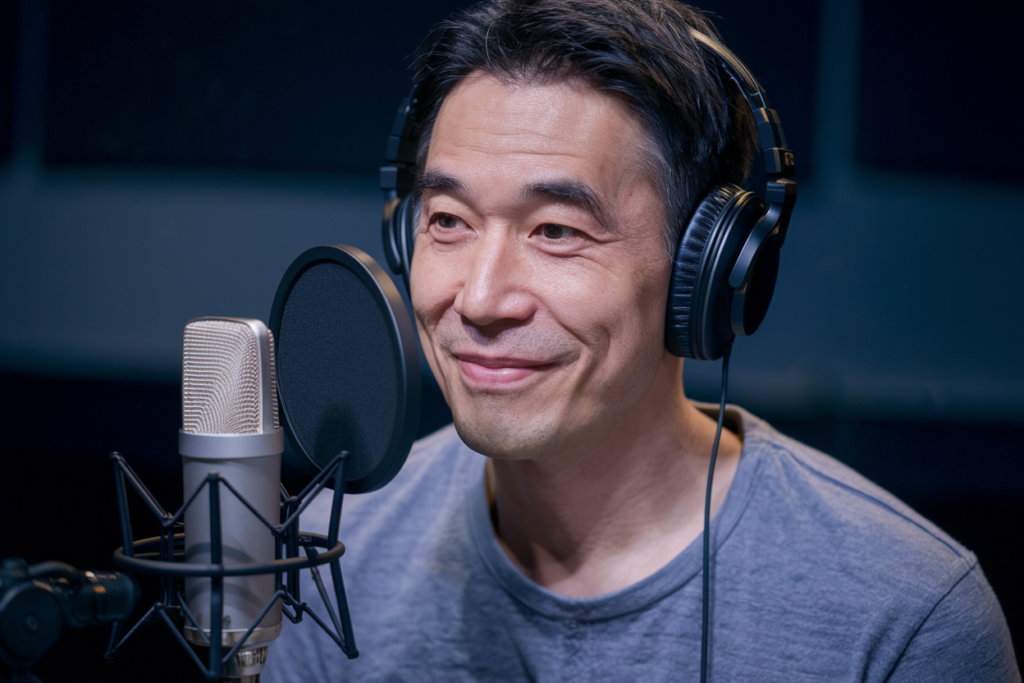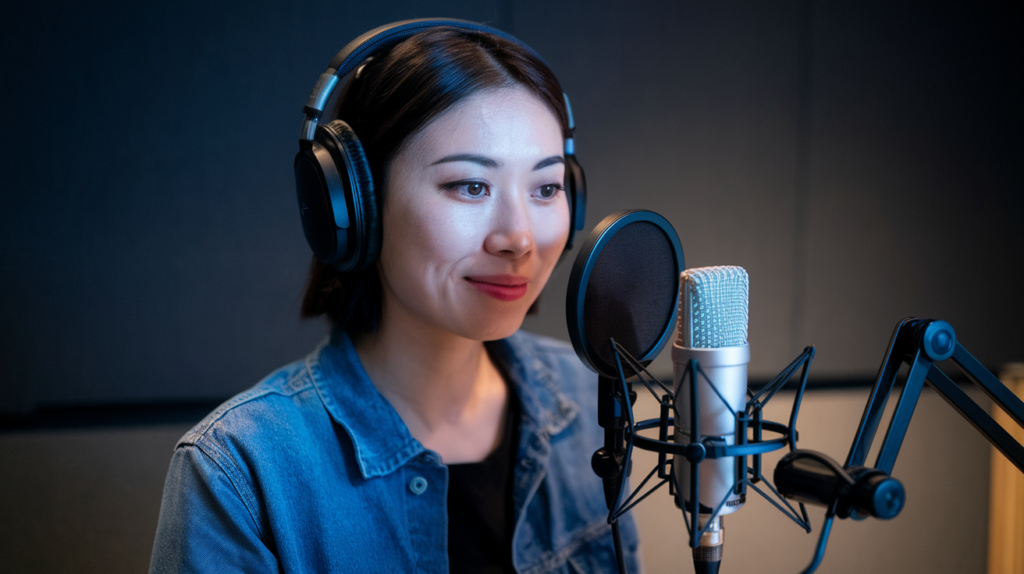Key Takeaways
- Accents Enhance Engagement: The right accent in Japanese voiceovers can significantly improve audience connection by capturing the essence of characters and narratives.
- Cultural Context Matters: Understanding regional accents, such as Kansai or Tokyo, adds authenticity and depth to character portrayals, enriching storytelling.
- Target Audience Alignment: Selecting an accent that resonates with your specific demographic enhances relatability, fostering viewer loyalty and satisfaction.
- Character Personality Influence: Matching accents to character traits—like lively Kansai for energetic roles—helps create memorable and relatable characters.
- Research Is Key: Conduct thorough research on regional nuances to ensure authenticity in voice performances, making your project more compelling.
- Prioritize Authenticity Over Trends: Focus on genuine representation through careful accent selection rather than following fleeting trends for deeper audience connection.
Ever wondered how the right accent can elevate your Japanese voiceovers? Selecting accents isn’t just about sound; it’s about capturing the essence of characters and stories. Whether you’re working on anime, video games, or commercials, choosing the perfect accent can make all the difference in engaging your audience.
Importance Of Accents In Japanese Voiceovers
Accents play a crucial role in Japanese voiceovers, shaping how characters and stories resonate with the audience. When selecting a voiceover talent, consider that accents provide context and authenticity to the narrative. Different regions in Japan have distinct accents, each carrying unique cultural nuances.
For instance, a character from Osaka may sound more lively and humorous compared to one from Tokyo, whose accent may convey sophistication or seriousness. This subtlety enhances character development and can significantly impact audience engagement.
Voice actors who master these accents bring depth to their performances. They embody not just the words but also the emotions tied to specific dialects. Engaging a voice artist skilled in regional accents enriches your project by ensuring it feels genuine and relatable.
Moreover, using the right accent helps target specific demographics effectively. If your content aims at younger audiences familiar with certain dialects, choosing a voice over actor who knows those accents can enhance relatability. This connection fosters viewer loyalty and increases overall satisfaction with your project.
Prioritizing accents when hiring for Japanese voiceovers leads to richer storytelling and stronger connections between characters and audiences.
Factors To Consider When Selecting Accents
Selecting the right accent for your Japanese voiceovers involves multiple crucial factors that can impact how effectively your message resonates with the audience.
Target Audience
Understanding your target audience is key. Different regions in Japan have unique accents, each appealing to specific demographics. For instance, if you’re aiming for a younger audience in urban areas, a Tokyo accent might connect better due to its contemporary feel. Conversely, an Osaka accent could enhance engagement with audiences who appreciate humor and warmth. By aligning the accent with your audience’s cultural background and preferences, you create a more relatable experience that fosters connection and loyalty.
Character Personality
Character personality significantly influences accent choice. A lively character may benefit from an energetic Kansai dialect, showcasing their playful nature. Alternatively, a serious or sophisticated character may require a standard Tokyo accent to convey professionalism and depth. The right voice actor can embody these traits through their delivery and tone, enhancing character authenticity. Think about the emotions you want to evoke; matching an accent to those feelings makes characters more memorable and relatable.
By considering both your target audience and character personality when selecting accents for Japanese voiceovers, you create a compelling narrative that engages listeners on multiple levels.
Popular Accents In Japanese Voiceovers
Accents enrich Japanese voiceovers, adding depth and authenticity to characters. Understanding the various accents enhances audience engagement, making narratives more relatable.
Standard Japanese
Standard Japanese, or “Hyojungo,” serves as the foundation for most voiceovers. This accent is often used in formal contexts and media aimed at a broad audience. Many voice actors adopt this style for clarity and neutrality, ensuring that their performances resonate with listeners nationwide. It’s particularly effective in educational content and mainstream anime where character diversity exists but needs a common linguistic thread.
Regional Variants
Regional accents bring unique flavors to voiceovers, reflecting Japan’s rich cultural landscape. Here are some notable variations:
- Kansai Accent: Famous for its lively tone, the Kansai dialect stands out with its humor and warmth. Characters from Osaka or Kyoto often embody playful or comedic traits.
- Tokyo Accent: The Tokyo accent conveys sophistication and modernity. It’s commonly used by characters representing urban life or serious themes, appealing to younger audiences.
- Hokkaido Accent: This northern accent offers a softer sound, ideal for portraying gentle or kind-hearted characters deeply connected to nature.
- Okinawan Accent: Unique and melodic, Okinawan speech adds an exotic touch to stories set in southern Japan. It reflects local culture through distinct pronunciation patterns.
Selecting the right regional variant ensures your voiceover resonates with specific demographics while enhancing character development. By incorporating these accents into your projects, you can create authentic narratives that captivate listeners effectively.
Techniques For Choosing The Right Accent
Selecting the right accent for your voiceover project involves several key techniques. You’ll want to consider the context of the narrative and how it resonates with your audience.
- Identify Target Audience: Understand who you’re reaching. Different accents appeal to different demographics. A Tokyo accent may attract younger listeners in urban settings, while an Osaka accent could engage those who appreciate humor and playfulness.
- Match Character Personality: Align the accent with character traits. Energetic characters thrive on lively Kansai dialects, whereas serious roles often benefit from a standard Tokyo accent that conveys depth and focus.
- Research Regional Nuances: Explore regional accents for authenticity. Each Japanese region has unique characteristics that add flavor to performances. Researching these nuances can help you select an accent that enhances your narrative.
- Test Variations: Experiment with multiple accents during auditions or practice sessions. Listening to how different accents influence delivery can provide insights into what feels right for both character development and audience engagement.
- Consult Experienced Voice Actors: Seek advice from seasoned voice actors or voiceover professionals familiar with various accents in Japanese media. Their insights can guide you in making informed choices about which accent works best for your project’s objectives.
- Consider Project Genre: Factor in the genre of your project when choosing an accent. Anime might require distinct regional flavors, while commercials may lean towards clarity through standard Japanese, depending on target markets.
- Emphasize Authenticity: Prioritize authenticity over trends; audiences appreciate genuine representation over forced portrayals of characters or stories they connect with deeply.
By following these techniques, you ensure that each choice aligns seamlessly with your overall vision, enhancing both storytelling and audience connection through effective use of voice talent.
Conclusion
Selecting the right accent for Japanese voiceovers is essential for crafting engaging and relatable narratives. It’s about creating authentic connections with your audience and enhancing character depth. By understanding regional nuances and aligning accents with both character traits and target demographics, you can elevate your project significantly.
Prioritizing authenticity over trends ensures that your voice talent resonates genuinely with listeners. Whether you’re working on anime video games or commercials, the right accent will enrich storytelling and captivate viewers effectively. Embrace the diversity of Japanese accents to bring your characters to life in a way that truly engages your audience.
Frequently Asked Questions
Why is selecting the right accent important for Japanese voiceovers?
Choosing the right accent in Japanese voiceovers enhances audience engagement by adding authenticity and depth to characters and narratives. Different accents reflect cultural nuances and can influence how audiences perceive character traits, making the story more relatable.
How do accents affect character development in voiceovers?
Accents play a crucial role in shaping characters’ personalities. For instance, a lively Osaka accent can convey humor, while a Tokyo accent may suggest sophistication. This alignment helps create compelling narratives that resonate with specific demographics.
What are some popular accents used in Japanese voiceovers?
Commonly used accents include Standard Japanese (Hyojungo) for neutrality, Kansai for humor, Tokyo for urban themes, Hokkaido for gentleness, and Okinawan to reflect local culture. Each adds unique flavors to the performance.
What factors should creators consider when choosing an accent?
Creators should consider their target audience’s preferences, match character personality with suitable accents, research regional nuances for authenticity, and test variations during auditions. These elements help craft relatable narratives that connect with listeners.
How can understanding demographics influence accent selection?
Understanding demographics allows creators to choose accents that resonate better with specific groups. For example, younger urban audiences might prefer a Tokyo accent, while those who enjoy humor may connect more with an Osaka dialect.







